Day 1 :
Keynote Forum
Ching Y Suen
Concordia University, Canada
Keynote: Digital fonts and reading
Time : 10:05-10:35
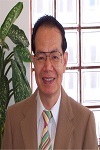
Biography:
Ching Y. Suen is the Director of CENPARMI and the Concordia Honorary Chair on AI & Pattern Recognition. He received his Ph.D. degree from UBC (Vancouver) and his Master's degree from the University of Hong Kong. He has served as the Chairman of the Department of Computer Science and as the Associate Dean (Research) of the Faculty of Engineering and Computer Science of Concordia University. Prof. Suen has served at numerous national and international professional societies as President, Vice-President, Governor, and Director. He has given 45 invited/keynote papers at conferences and 200 invited talks at various industries and academic institutions around the world. He has been the Principal Investigator or Consultant of 30 industrial projects. His research projects have been funded by the ENCS Faculty and the Distinguished Chair Programs at Concordia University, FCAR (Quebec), NSERC (Canada), the National Networks of Centres of Excellence (Canada), the Canadian Foundation for Innovation, and the industrial sectors in various countries, including Canada, France, Japan, Italy, and the United States. Currently, he is the Editor-in-Chief of the journal of Pattern Recognition, an Adviser or Associate Editor of 5 journals, and Editor of a new book series on Language Processing and Pattern Recognition. Actually he has held previous positions as Editor-in-Chief, or Associate Editor or Adviser of 5 other journals. He is not only the founder of three conferences: ICDAR, IWFHR/ICFHR, and VI, but has also organized numerous international conferences including ICPR, ICDAR, ICFHR, ICCPOL, and as Honorary Chair of numerous international conferences.
Abstract:
Thousands of years ago, humans started to create symbols to represent things they saw, heard, touched, found, remembered, imagined, and talked about. We can see them carved on rocks, walls, shells, and other materials. From these symbols, words and different languages were invented, modified, expanded, and evolved over the years. Following the invention of paper and writing instruments, different ways of representing the same symbol started to appear, forming the basis of different stylistic variations and font types.As time went by, computers and digital technology emerged with which the alphabets of all languages in the world can be printed digitally. Once a symbol has been represented in a digital format, there are infinite ways of representing it in unlimited type fonts for publishing. This talk summarizes the evolution of fonts, their characteristics and their personality traits. Aspects such as font styles and their effects on reading and eyesight, legibility and comprehension, will be discussed with experimental results.
Keynote Forum
Yoichiro Kawaguchi
University of Tokyo, Japan
Keynote: Art and multimedia
Time : 10:35-11:05
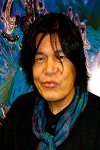
Biography:
Born in Tanegashima Island. Kawaguchi has been working on Computer Graphics since 1975, and has been recognized as a pioneer and a world-class authority of CG art by his unique style. Using his ‘GROWTH Model’, a Self-Organizing procedural modeling algorithm, he has been creating various artificial complex life forms. Recent work includes development of CG expression of natural beauty based on physical basic model, 8K Ultra High Definition CG art, creation of new traditional art-form incorporating traditional craftsmanship and advanced IT-based expression, creation of artistic and primitive robot for planet exploration, development of ‘Gemotion’(Gene, Growth + emotion) 3D Bumpy display which react emotion like living beings. He won ‘ACM SIGGRAPH Distinguished Artist Award for Lifetime Achievement’ in 2010 for creative and innovative artistry, giving life to a stunning aesthetic derived from his dedicated research in computer technology, biological forms, and contemporary artistic practice. In 2013, He received the Award from the Ministry of Education in the Art Encouragement Prizes and Medal with Purple Ribbon.
Abstract:
I would like to reflect on computer graphic and multi-media arts from the vantage point of my own 40 years of association with them. First of all, a person must seek out the creative things he or she is aiming for from a point removed from principle-like habits and the tendencies of soft-ware programs created in advance. Namely, I think it is important that a person does not let his or her own creative urge get covered by a program with rather technical things pushed into the foreground. Independence and originality concerning form and color have no meaning unless completely controlled by the person who stands at the core of art. One should never create a structure embodying something developed through easy, wild numbers and chance. Moreover, there is a method of creating living things and/or nature under a quasi-reconstruction of the laws of the natural world. This method, which approaches the observation values as closely as possible, will continue for a long time hence. This is to pursue why materialistic shapes and colors exist in this transcendent sphere which include the natural world and the cosmos. The enlargement of those realms of existence will certainly render a moulding cut off from the framework of earth or mankind possible. This will come to question its main constituent in the very process of selecting various subjects. Consequently, the way of existence of the object itself is already a product of conception, which is not cut off at all from the artistic qualities from which it should be separate. The very laws themselves concerning form have arisen and grown, creating their own present system which is self-propagating. In other words, the process has hypothesized something which retains energy within. It is something which has advanced one step beyond a simulation of a cross-section of the natural world. It is an approach to nature in another sense. That is to say, because circumstantial stimulation can called a hypothesis thin the framework of fixed time, it becomes equipped with the same time as the observer despite the lack of a non-present system of simultaneity. Thus, the immediacy and the extemporaneousness of formation come to have direct perceptions and connections. My “Growth” series lies indeed at the starting point. Demands will be made from now on in the form of self-propagation and natural occurrence, and they appear to have active bearings on the sixth sense in human beings and aesthetics.
Keynote Forum
Jamie Denham
Sliced Bread Animation, UK
Keynote: Animation: The reality of emotion
Time : 11:25-11:55

Biography:
Jamie studied animation on the acclaimed course at Farnham in Surrey and has been in the field of animation production for over 18 years during which time he has worked on a number of broadcast and commercial productions. He is now Managing Director of the London based animation studio, Sliced Bread Animation. They offer 2D and 3D animation, illustration and design for digital media projects, including Virtual reality and Augmented Reality. Over the last 13 years they have successfully applied animation to all media platforms - from motion graphics, title sequences and TV commercials to online animation series and events.
Abstract:
Animation has long played a integral part in generating an emotional response to cinematic storytelling but now the mold has become more fragmented, and we are beginning to immerse ourselves into virtual worlds, and distort our own. What role then does animation play in manipulating and managing emotional levels? As humans we interact through connection, and ways of establishing that connection can be joy, sadness and anger, is there a danger they are enhanced through audio and visual manipulation in the virtual space. Is there an onus on the auteur to show restraint and responsibility within cognitive stimulus? In my talk I plan to explore the connective aspects of the emotional states, the fabric of storytelling and the virtual constructs we begin to enter.
- Imaging and Image processing
Multimedia in Computer Games
Mobile Multimedia
Multimedia Tools and Applications
Multimedia Signal Processing
Location: Madison

Chair
Vijayan K Asari
University of Dayton, USA

Co-Chair
Margrit Gelautz
Vienna University of Technology, Austria
Session Introduction
Yoichiro Kawaguchi
Tokyo University, Japan
Title: Art and Multimedia
Time : 10:35-11:05
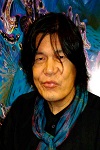
Biography:
Born in Tanegashima Island. Kawaguchi has been working on Computer Graphics since 1975, and has been recognized as a pioneer and a world-class authority of CG art by his unique style. Using his ‘GROWTH Model’, a Self-Organizing procedural modeling algorithm, he has been creating various artificial complex life forms. Recent work includes development of CG expression of natural beauty based on physical basic model, 8K Ultra High Definition CG art, creation of new traditional art-form incorporating traditional craftsmanship and advanced IT-based expression, creation of artistic and primitive robot for planet exploration, development of ‘Gemotion’(Gene, Growth + emotion) 3D Bumpy display which react emotion like living beings. He won ‘ACM SIGGRAPH Distinguished Artist Award for Lifetime Achievement’ in 2010 for creative and innovative artistry, giving life to a stunning aesthetic derived from his dedicated research in computer technology, biological forms, and contemporary artistic practice. In 2013, He received the Award from the Ministry of Education in the Art Encouragement Prizes and Medal with Purple Ribbon.
Abstract:
I would like to reflect on computer graphic and multi-media arts from the vantage point of my own 40 years of association with them. First of all, a person must seek out the creative things he or she is aiming for from a point removed from principle-like habits and the tendencies of soft-ware programs created in advance. Namely, I think it is important that a person does not let his or her own creative urge get covered by a program with rather technical things pushed into the foreground. Independence and originality concerning form and color have no meaning unless completely controlled by the person who stands at the core of art. One should never create a structure embodying something developed through easy, wild numbers and chance. Moreover, there is a method of creating living things and/or nature under a quasi-reconstruction of the laws of the natural world. This method, which approaches the observation values as closely as possible, will continue for a long time hence. This is to pursue why materialistic shapes and colors exist in this transcendent sphere which include the natural world and the cosmos. The enlargement of those realms of existence will certainly render a moulding cut off from the framework of earth or mankind possible. This will come to question its main constituent in the very process of selecting various subjects. Consequently, the way of existence of the object itself is already a product of conception, which is not cut off at all from the artistic qualities from which it should be separate. The very laws themselves concerning form have arisen and grown, creating their own present system which is self-propagating. In other words, the process has hypothesized something which retains energy within. It is something which has advanced one step beyond a simulation of a cross-section of the natural world. It is an approach to nature in another sense. That is to say, because circumstantial stimulation can called a hypothesis thin the framework of fixed time, it becomes equipped with the same time as the observer despite the lack of a non-present system of simultaneity. Thus, the immediacy and the extemporaneousness of formation come to have direct perceptions and connections. My “Growth” series lies indeed at the starting point. Demands will be made from now on in the form of self-propagation and natural occurrence, and they appear to have active bearings on the sixth sense in human beings and aesthetics.
David Xu
Regent University, USA
Title: Dynamic simulation and effects in animation and computer game
Time : 11:55-12:20

Biography:
Professor David Xu is tenure associate professor at Regent University, specializing in computer 3D animation and special effects. He got MFA Computer Graphics in 3D Animation from Pratt Institute in NY. He has served as a senior 3D animator in Sega, Japan; a senior CG special effector in Pacific Digital Image Inc., Hollywood; and as a professor of animation in several colleges and universities where he developed the 3D animation program and curriculum. He has been a committee member of the computer graphics organization Siggraph Electronic Theater, where he was recognized with an award for his work. He is also an organizing committee member of CG2016. He published the book Mastering Maya: The Special Effects Handbook invited by Shanghai People's Fine Arts Publishing House.
Abstract:
Dynamics is the simulation of motion through the application of the principles of physics. Instead of assigning keyframes to objects to animate them, you assign physical characteristics that define how an object behaves in a simulated world. The dynamic bodies are converted from the objects created, and defined through dynamic attributes, which affect how the objects behave in a dynamic simulation. With dynamic simulation, you can create many impressive effects such as explosion, flood, storm, tonado, ocean, etc. for animations and computer games. In this presentation, Professor Xu will overview the tools and techniques to simulate and render hair, fur, feathers, cloth, liquids, fluids, particles and rigid and soft bodies, and demonstrate how to use the Dynamic Relationships Editor to connect and disconnect dynamic relationships between dynamic objects such as particles, nParticles, fluids and emitters, and non-Nucleus collision objects, how to use the Collision Events Editor to create collision events for nParticles, and how to use the Sprite Wizard to simplify the process for displaying a texture image or image sequences on nParticles. The applications of dynamic simulation and effects in animations and computer games will also be explored.
Margrit Gelautz
Vienna University of Technology, Austria
Title: Algorithms for 3D film content generation and post-processing
Time : 12:20-12:45

Biography:
Margrit Gelautz is an associate professor at Vienna University of Technology, Austria, where she directs a research group on Image and Video Analysis & Synthesis with a focus on 3D film/TV applications. She is co-founder of emotion3D, a spin-off company working in the field of 3D imaging/displaying and mobile vision. Margrit Gelautz has directed a number of research projects in national and international collaboration and recently co-edited a book on Advances in Embedded Computer Vision. She was director of TU Vienna’s Doctoral College Computational Perception (2010-2013) and Vice-chair of the IEEE Austria Section (2012-2014).
Abstract:
In this talk we present algorithms for 3D reconstruction and novel view synthesis that form part of a 3D film processing chain which aims at generating high-quality 3D content for different types of 3D displays. The first part of the talk focuses on a trifocal camera set-up consisting of a high-end main camera and a compact assistant stereo rig which are aligned in an L-shape configuration. We discuss different strategies for stereo matching between the main and assistant cameras along with challenges posed by our specific camera arrangement. We further address the need for depth map post-processing and inpainting techniques in order to generate high-quality novel views. The results of our trifocal system with virtual view synthesis are evaluated by a user study. In the second part of the talk, we concentrate on 3D content generation from monoscopic film material. We describe a method for converting original 2D image sequences to 3D content based on comfortable user scribbles placed on key frames. The initially sparse depth values are propagated throughout the video volume to obtain temporally and perceptually coherent 2D-to-3D conversions. The results of this approach are illustrated on a variety of test material.
Bogdan Smolka
Silesian University of Technology, Poland
Title: On the fast impulsive noise removal in color digital images
Time : 13:25-13:50

Biography:
Bogdan Smolka received the Diploma in Physics degree from the Silesian University, Katowice, Poland, in 1986 and the Ph.D. degree in computer science from the Department of Automatic Control, Silesian University of Technology, Gliwice, Poland, in 1998. Since 1994, he has been with the Silesian University of Technology. In 2007, Dr. Smolka was promoted to Professor at the Silesian University of Technology. He has published over 250 papers on digital signal and image processing in refereed journals and conference proceedings. His current research interests include low-level color image processing, human-computer interaction, and visual aspects of image quality.
Abstract:
Noise reduction in color images is still an important research field of image processing and computer vision. Recent advances in imaging technology has been accompanied by the miniaturization of optical systems and shrinkage of pixel sensors area to accommodate increasing spatial resolution. As a result, many imaging devices provide shots of poor quality in low light situations. Therefore, fast and effective image denoising techniques are still of vital importance for the performance of the imaging pipeline and the successive steps of image analysis. The novel filter is based on the concept of exploration of the local pixel neighborhood by digital paths which start from the boundary of a filtering window and reach its central element. The minimal value of the paths ending at a given pixel serves as a measure of its impulsiveness. To decrease the computational complexity, the proposed approach is utilizing only shortest paths joining the border of a window with its center. In the 5x5 filtering window only 8 paths consisting of 2 nodes have to be examined, which leads to the computation of only 16 Euclidean distances between the pixels in a given color space. To determine the filter output, a soft-switching scheme is applied, which is a compromise between the identity filter and the weighted average of uncorrupted pixels in the processing window. The comparison with the state-of-the-art algorithms revealed excellent properties of the proposed denoising framework. The filtering operations can be easily parallelized and thus can be utilized for real time image and video enhancement.
Ruzena Bajcsy
University of California, Berkeley, USA
Title: Personalized model of kinematic and dynamic of physical activities
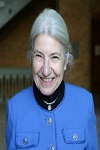
Biography:
Ruzena Bajcsy received the Master's and Ph.D. degrees in electrical engineering from Slovak Technical University, Bratislava, Slovak Republic, in 1957 and 1967, respectively, and the Ph.D. in computer science from Stanford University, Stanford, CA, in 1972. She is a Professor of Electrical Engineering and Computer Sciences at the University of California, Berkeley, and Director Emeritus of the Center for Information Technology Research in the Interest of Science (CITRIS). Prior to joining Berkeley, she headed the Computer and Information Science and Engineering Directorate at the National Science Foundation. Dr. Bajcsy is a member of the National Academy of Engineering and the National Academy of Science Institute of Medicine as well as a Fellow of the Association for Computing Machinery (ACM) and the American Association for Artificial Intelligence. In 2001, she received the ACM/Association for the Advancement of Artificial Intelligence Allen Newell Award, and was named as one of the 50 most important women in science in the November 2002 issue of Discover Magazine. She is the recipient of the Benjamin Franklin Medal for Computer and Cognitive Sciences (2009) and the IEEE Robotics and Automation Award (2013) for her contributions in the field of robotics and automation.
Abstract:
By now it has become a cliché the statement that the population in industrial world is aging and hence the problem of physical agility is a serious health problem. Moreover this issue is aggravated even with younger population due to our sedative life style. It also is an undeniable (perhaps even too obvious) fact that every human’s anatomy and physiology is different. In recognition of this fact we are focusing in our efforts in development of personalized models of kinematic and dynamics of an individual during physical activities. For this purpose we are focusing on non-invasive observations in order to extract the necessary physical parameters to develop veritable kinematic and dynamic models of the human physical capabilities. The above mentioned kinematic and dynamical models are facilitated by: Availability of various relatively inexpensive/affordable and noninvasive devices that can deliver the necessary parameters of the position, velocity, acceleration, masses of not only the body but individual limbs, forces generated during various physical activities. These devices are not only the standard cameras, motion capture, force plates and force sensors, Inertial measuring devices, but also hand held ultrasound cameras, infrared sensors measuring oxygen in the blood. More advanced sensors are rapidly developing such as glucose measurements. In this presentation we shall show how this multimedia observations on people enable to develop the individual kinematic and dynamic predictive models of the physical performance of the individual. These models predict not only the physical performance of the individual but also delineate the boundaries of stable reachable space both for kinematic workspace as well as for dynamic workspace.

Biography:
Robert S Laramee received a bachelors degree in physics, cum laude, from the University of Massachusetts, Amherst (ZooMass). He received a masters degree in computer science from the University of New Hampshire, Durham. He was awarded a PhD from Vienna University of Technology (Gruess Gott TUWien), Austria at the Institute of Computer Graphics and Algorithms in 2005. From 2001 to 2006 he was a researcher at the VRVis Research Center (www.vrvis.at) and a software engineer at AVL (www.avl.com) in the department of Advanced Simulation Technologies. Currently he is an Associate Professor in Data Visualizaton at Swansea University (Prifysgol Cymru Abertawe), Wales in the Department of Computer Science (Adran Gwyddor Cyfrifiadur). His research interests are in the areas of big data visualization, visual analytics, and human-computer interaction. He has published more than 100 peer-reviewed papers in scientific conferences and journals and served as Conference Chair of EuroVis 2014, the premiere conference on data visualization in Europe.
Abstract:
With the advancement of simulation and big data storage technologies and the ever-decreasing costs of hardware, our ability to derive and store data is unprecedented. However, a large gap remains between our ability to generate and store large collections of complex, time-dependent flow simulation data and our ability to derive useful knowledge from it. Flow visualization leverages our most powerful sense, vision, in order to derive knowledge and gain insight into large, multi-variate flow simulation data sets that describe complicated and often time-dependent behavior. This talk presents a selection of state-of-the art flow visualization techniques and applications in the area of computational fluid dynamics (CFD), showcasing some of visualizations strengths, weaknesses, and, goals. We describe inter-disciplinary projects based on flow, where visualization is used to address fundamental questions-the answers of which we hope to discover in various large, complex, and time-dependent phenomena. It’s flow like you’ve never seen it before.
Leonardo Sacht
Federal University of Santa Catarina, Brazil
Title: Real-time correction of panoramic images using hyperbolic Möbius transformations
Time : 14:15-14:40

Biography:
Leonardo Sacht is an adjunct professor at Federal University of Santa Catarina (UFSC) in Florianopolis, Brazil. He received a bachelor degree in Mathematics and Scientific Computing from UFSC in 2008 and MSc and DSc degrees in Mathematics from the Brazilian Institute for Pure and Applied Mathematics (IMPA) in 2010 and 2014, respectively. He also spent one year between 2012 and 2013 as a visiting student at ETH Zurich, in Switzerland. Dr. Sacht has recently published papers on important journals such as ACM Transactions on Graphics, Journal of Real-Time Image Processing and IEEE Transactions on Image Processing.
Abstract:
Wide-angle images gained a huge popularity in the last years due to the development of computational photography and imaging technological advances. They present the information of a scene in a way which is more natural for the human eye but, on the other hand, they introduce artifacts such as bent lines. These artifacts become more and more unnatural as the field of view increases. In this work, we present a technique aimed to improve the perceptual quality of panorama visualization. The main ingredients of our approach are, on one hand, considering the viewing sphere as a Riemann sphere, what makes natural the application of Möbius (complex) transformations to the input image, and, on the other hand, a projection scheme which changes in function of the field of view used. We also introduce an implementation of our method, compare it against images produced with other methods and show that the transformations can be done in real time, which makes our technique very appealing for new settings, as well as for existing interactive panorama applications.
Changsoo Je
Sogang University, Korea
Title: Homographic p-norms: Metrics of homographic image transformation
Time : 14:40:15:05

Biography:
Changsoo Je received the BS degree in Physics and the MS and PhD degrees in Media Technology from Sogang University, Seoul, Korea, in 2000, 2002, and 2008, respectively. He is currently a Research Professor of Electronic Engineering at Sogang University, Seoul, Korea. He was a Senior Analyst of Standard and Patent at Korea Institute of Patent Information (2010-2011), a Research Professor (2009-2010), and a Postdoctoral Research Fellow (2008-2009) of Computer Science and Engineering at Ewha Womans University. His research interests include computer vision, computer graphics, and image processing. He received an Outstanding Paper Award at the Korea Computer Graphics Society Conference in 2008 and a Samsung Humantech Thesis Prize Award from Samsung Electronics Co., Ltd. in 2004.
Abstract:
Images often need to be aligned in a single coordinate system, and homography is one of the most efficient geometric models to align images. In this talk, we present homographic p-norms, scalar metrics of homographic image transformation, and to the best of our knowledge these are the most rigorous definition of scalar metrics quantifying homographic image transformations. We first define a metric between two homography matrices, and show it satisfies metric properties. Then we propose metrics of a single homography matrix for a general planar region, and ones for a usual rectangle image. For use of the proposed metrics, we provide useful homographic 2-norm expressions derived from the definition of the metrics, and compare the approximation errors of the metrics with respect to the exact metric. As a result, the discrete version of the metric obtained by pixel-wise computation is greatly close to the exact metric. The proposed metrics can be applied to evaluation of transformation magnitude, image closeness estimation, evaluation of camera pose difference, selection of image pair in stereo vision, panoramic image mosaic, and deblurring. Experimental results show the efficacy of the proposed metrics
Toshie Takahashi
Waseda University, Japan
Title: The complexity model of communication with computer images
Time : 15:05-15:30

Biography:
Toshie Takahashi is Professor in the School of Culture, Media and Society, Waseda University, Tokyo, Japan. She was appointed faculty fellow at the Berkman Center for Internet and Society at Harvard University, 2010-2011 and, before that, visiting research fellow at the Department of Education in the University of Oxford. Her current research is an ethnography centred on cross-cultural research into youth and digital media among US, UK and Japan. She graduated with a PhD in Media and Communications from the London School of Economics and Political Science and an MA in Sociology from the University of Tokyo
Abstract:
Social and natural scientists have used the complexity paradigm to address issues of the complexity and dynamism of phenomena which hitherto in traditional approaches had been made invisible or had been regarded as aberrant – thereby adding to our explanatory and manipulative power (Eve, 1997). As Appadurai (1996) calls for a human version of complexity theory in order to further the theory of global cultural interactions, Takahashi (2009) has applied a non-linear, non-reductionist model to human communication, using the ethnographic method, which is a non-linear methodology. Takahashi has provided an integrated framework for the demonstration of three dimensions of complex systems: individuals, social groups and cultures and the paths of dynamic interaction between these in terms of interactivity, self-organisation, adaptivity and the notion of the edge of chaos, thus contributing to the idea of a human version of complexity theory. There are numerous complex systems that exist among the micro and macro levels and each level is not discrete but rather is intra- and inter-connected and moreover dynamically interacts with the other. In this presentation, we will demonstrate the complex model of communication with some computer images to understand the diversity, dynamism and complexity of human communication in the global digital world
Xiaobo Zhang
Xianyang Normal University, China
Title: Gradient domain image denoising
Time : 15:30-15:55

Biography:
Xiaobo Zhang received his Ph.D. degree in Department of Mathematics from XiDian University, Xi’an, China, in March 2014. He is currently an associate professor with Xianyang Normal University, Xianyang, China. His research interests include Wavelet, Partial Differential Equation and Statistical Theory for Image Processing. He has published more than 14 papers in reputed journals and conferences as first author and corresponding author. He is the reviewer of Computers and Electrical Engineering.
Abstract:
Image denoising is one of the oldest topics in image processing and has been widely studied. The main aim of an image denoising algorithm is then to reduce the noise level, while preserving the image features (such as edges, textures, etc.). A good denoising algorithm should achieve high quality results with low computation load. Recently, image denoising methods based on gradient domain have shown superior performance in this respect. This presentation aims to establish a universal framework for image denoising algorithms from local scheme to nonlocal one by gradient domain. Firstly, the gradient domain local adaptive layered Wiener filter is presented by researching the statistical property of gradient coefficients. Secondly, the multi-direction gradient domain scheme is proposed by researching the classical nonlocal means method. Finally, the multi-direction gradient domain scheme is extended to wavelet domain because of the statistical characteristic of wavelet coefficients. At this time, the multiple-step local Wiener filter method in the wavelet domain is produced. Experimental results and comparisons with the related state-of-the-art methods show that the proposed techniques achieve the good performance with high efficiency.
Mohamed A. Naiel
Concordia University, Canada
Title: Approximation of feature pyramids in the transform domain for object detection
Time : 16:15-16:40

Biography:
Mohamed A. Naiel received the B.Sc. degree in electronics and communications engineering from Tanta University, Tanta, Egypt in June 2006 and the M.Sc. degree in communications and information technology from Nile University, Giza, Egypt in June 2010. He is currently pursuing the Ph.D. degree in electrical and computer engineering with Concordia University, Montreal, QC, Canada. He has been a research assistant with the center for signal processing and communications, Concordia University, since 2011. His research interests include image and video processing, computer vision, human action recognition, object detection and recognition, and multi-object tracking.
Abstract:
Feature extraction from each scale of an image pyramid to construct a feature pyramid is considered as a computational bottleneck for many object detectors. In this paper, we present a novel technique for the approximation of feature pyramids in the transform domain, namely, the 2D discrete Fourier transform (2DDFT) or the 2D discrete cosine transform (2DDCT) domain. The proposed method is based on a feature resampling technique in the 2DDFT or the 2DDCT domain, exploiting the effect of resampling an image on the feature responses. Experimental results show that the proposed scheme provides feature approximation accuracy which is higher than that of the spatial domain counterpart when gradient magnitude or gradient histogram features are used. Further, when the proposed method is employed for object detection, it provides a detection accuracy superior to that provided by the spatial domain counterpart and compares favorably with that of the state-of-the-art techniques, while performing in real-time.
Ahmad A. Mazhar
Saudi Electronic University College of Computing and Informatics, KSA
Title: Efficient video compression techniques
Time : 16:40-17:05

Biography:
Dr. Ahmad A. Mazhar has been a member of the College of Computing and Informatics at Saudi Electronic University since 2015. He has more than ten years teaching experience. He received his Ph.D. in 2013 from De Montfort University, UK; his Master’s degree in computer science from Al- Balqa' Applied University, Salt, Jordan; and his Bachelor’s degree in computer science from Al-Zaytoonah University, Amman, Jordan. Dr. Ahmad has several publications in video compression and analysis.
Abstract:
Video coding is widely used in a variety of applications such as TV streaming, online gaming, virtual reality tours and video conferencing. These applications require good compression techniques so the communication bitrate is reduced without compromising the quality. H.264 has been dominating on many video applications since it was released in 2003. It showed high coding efficiency and reliability especially for standard-definition streaming. The H.264 and VP8 are designed mainly for resolutions lower than High Definition (HD); however, the resolutions nowadays and in the near future demand codecs that are designed to support HD resolutions in addition to Ultra High Definition (UHD). This led to one of the most popular codecs High-Efficiency Video Coding (HEVC) that was released in its first edition in 2013. As video compression is an open competition area and many codec developers are working on codecs developing. The giant Google company has also an important share in the field of video compression by its codec VP9. Google started developing the codec in 2011 as an improved successor of VP8 and released in 2013. Many video coding techniques are available nowadays, however, coding efficiency and complexity are vey important factors that affect selecting a codec. New approaches proposed to decrease the time complexity of encoding, one is done by jointly reducing the number of inter-modes and reference frames. After analyzing the likelihood of selecting inter-modes and reference frames, we arrange them in likelihood levels and check lower levels only if an RD cost condition is satisfied.
Guangya Liu
Hubei University of Technology, China
Title: Fuzzy PID Control Method for Outer Loop Voltage of Bidirectional DC-DC Converter
Biography:
Guangya Liu (1959-), Ph. D., Professor, researcher level senior engineer, research interests: power, electrical engineering and automation
Abstract:
This paper introduces the fuzzy PID control method for outer loop voltage of bidirectional DC-DC converter. In recent years, with the rapid development of new energy technology, bidirectional DC-DC converter has been widely used in the new energy vehicles. bidirectional DC-DC converter is a kind of strongly nonlinear system. How to make the converter system work steadily and fast is a hot research area. A bidirectional DC-DC converter is a strongly nonlinear system. The traditional PID control is known for its simple algorithm and easy design, but the parameters cannot do well in dynamic performance and static performance, which affect the final control effect. Taking the Boost converter as an example, a PI control for the voltage inner loop and a Fuzzy PID control for the voltage outer loop was proposed to improve disadvantages of the traditional PID control. And the Boost simulation experiment was built in Matlab/Simulink. The simulation results show that compared with the traditional PID control, this control method can effectively solve the nonlinear problems of bidirectional DC-DC converter, improve the response of bidirectional DC-DC converter, and reduce the output voltage fluctuation.

Biography:
Director of the Imagineering Institute, Iskandar Malaysia, chair Professor of Pervasive Computing at City University London. Founder and Director of the Mixed Reality Lab, Singapore. Previously Full Professor at Keio University, Graduate School of Media Design, Associate Professor in the National University of Singapore and Engineer in Mitsubishi Electric, Japan.Research in mixed reality, human-computer interfaces, wearable computers, pervasive and ubiquitous computing. Featured in worldwide broadcasts such as CNN, BBC, National Geographic, Discovery Channel, etc. Recipient of awards and prizes: A-STAR Young Scientist of the Year, Hitachi Fellowship, SCS Young Professional of the Year, Fellow in Education, World Technology Network, Microsoft Research Award in Gaming and Graphics, C4C Children Competition Prize, Integrated Art Competition Prize, Creativity in Action Award, First prize Mindtrek Award, First prize Milan International InventiON, Keio University Japan Gijyuju-sho award, SIP Distinguished Fellow Award, Young Global Leader by the World Economic Forum. Fellow of the Royal Society for the encouragement of Arts, Manufactures and Commerce (RSA), an organisation which is committed to finding innovative practical solutions to today’s social challenges.Editor in Chief of the academic journals: ACM Computers in Entertainment, Transactions on Edutainment (Springer), and Lovotics: Academic Studies of Love and Friendship with Robots. 1994, Bachelor's (First Class Hons) in Engineering, University of Adelaide; 1999, PhD in Engineering.

Abstract:
This talk outlines new facilities that are arising in the hyper connected internet era within human media spaces. This allows new embodied interaction between humans, species, and computation both socially and physically, with the aim of novel interactive communication and entertainment. Humans can develop new types of communication environments using all the senses, including touch, taste, and smell, which can increase support for multi-person multi-modal interaction and remote presence. In this talk, we present an alternative ubiquitous computing environment and space based on an integrated design of real and virtual worlds. We discuss some different research prototype systems for interactive communication, culture, and play
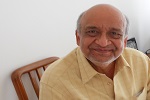
Biography:
Ramesh Jain is an entrepreneur, researcher, and educator. He is a Donald Bren Professor in Information & Computer Sciences at University of California, Irvine where he is doing research in Event Web and experiential computing. Earlier he served on faculty of Georgia Tech, University of California at San Diego, The university of Michigan, Ann Arbor, Wayne State University, and Indian Institute of Technology, Kharagpur. He is a Fellow of ACM, IEEE, AAAI, IAPR, and SPIE. His current research interests are in processing massive number of geo-spatial heterogeneous data streams for building Social Life Networks. He is the recipient of several awards including the ACM SIGMM Technical Achievement Award 2010. Ramesh co-founded several companies, managed them in initial stages, and then turned them over to professional management. These companies include PRAJA, Virage, and ImageWare. Currently he is involved in building Krumbs, a company building personalized visual web. He has also been advisor to several other companies including some of the largest companies in media and search space.
Abstract:
The 21st century began with a major disruption: the rapid rise of smartphones meant that capturing, storing, and sharing photos and their context became easier than using text. Photos and videos communicate directly, without the need for language or literacy. Thus, everyone in the world with a phone is a potential prosumer who can generate as well as consume these new documents. A photo represents information and experience related to a moment. A photo may be linked to many other photos along different dimensions. One may also create explicit links among photos or objects in photos. All photos on the Web form a Visual Web that links photos with other photos and other information elements including all documents on the WWW. This Visual Web offers opportunities to address many difficult yet unsolved problems. We will discuss role of photos as powerful information sources, technical challenges, and some interesting opportunities in this area. We will present a prototype system that could be used for creating such a system and outline technical challenges.
Susan Johnston
CEO Select Services Films Inc- & Founder/Director New Media Film Festival, USA
Title: Commerce and Engagement for Entertainment, The New Frontier

Biography:
Susan Johnston is President of award winning Select Services Films, Inc. (DBE) and is Founder/Director of New Media Film Festival. Johnston has a background in the traditional film and TV industry and in recent years as a pioneering new media producer including Stan Lee’s Comikaze Expo panel for Independent Creators, Co-Producing Feature Film Dreams Awake & currently producing the Marvel Comic feature Prey: Origin of the Species. While the Industry was changing from standard def to HD Johnston produced the 1stseries for mobile, Mini-Bikers the 1st live stream talk show on HD with a Panasonic Varicam and tested the Panasonic DVX100 which led to some changes on the DVX100A and was on the SAG New Media committee in 2003. Editorial board for the Encyclopedia of Computer Graphics and Games, Member-The Caucus New Media Steering Committee, Academy of Television Arts & Sciences New Media Interactive, BMI, SAG/AFTRA, Advisory board member for SET Awards (Entertainment Industry Council), Machinma Expo Judge, Advisory Board for Woodbury University Digital Media Lab and Professor Emeritus in New Media.
Abstract:
Engagement, monetization and technology are the stepping stones of building awareness and longevity of your brand. Interactive experiences over multiple platforms are becoming the norm. Which platforms are best for your content? Which strategies speak to your demographic? Technology has aligned with viewers objectives and curated content continues to gain popularity. There are too many Games and TV programs online to watch them all, but the really good ones can attract major attention. We will discuss how to take your content to the next level. We will share companies successes and failures in this area to learn what they did right and how you can match their success and avoid there failures. In doing so, you will learn how to make your content not only stand out from all the rest but build a loyal following that helps you spread the word to engage the masses.

Biography:
Will Kim is a Los Angeles based artist and filmmaker. Will is Associate Professor of Art at Riverside City College where he also directs Riverside City College Animation Showcase. Will Kim received an MFA ('09) in Animation from UCLA and a BFA ('07) in Character Animation from Cal Arts. In recent years, he also taught at Cal Arts, Community Arts Partnership and Sitka Fine Arts Camp as a media art instructor. Kim’s work has showed in over 100 international film/animation festivals and auditoriums including Directors Guild of America (DGA) Theater, Academy of TV Arts and Sciences Theater, The Getty Center, The USC Arts and Humanities Initiative, and Museum of Photographic Arts San Diego. As an animation supervisor and a lead animator, Will has participated in various feature and short live action films that were selected for the New York Times' Critic's Pick, the United Nations' Climate Change Conference, Los Angeles Film Festival, Tribeca Film Festival, and Cannes. Also, Will has painted and animated for companies like 'Adidas' and 'Ito En.'
Abstract:
A definition of Multimedia is ‘the use of a variety of artistic or communicative media.’ Multimedia just like drawing, and a sculpture, is one of many tools to visually communicate ideas, stories, and feelings. When discussing different multiple media sources, it is important to keep in mind the audiences and consumers receive information and ideas very differently from one another in various ways. The presentation will focus on using painting and drawing mediums to create graphics and animation and digitally compiled, edited, and converted to be viewed in galleries, social networking sites, TV, theaters, and etc.

Biography:
Will Kim is a Los Angeles based artist and filmmaker. Will is Associate Professor of Art at Riverside City College where he also directs Riverside City College Animation Showcase. Will Kim received an MFA ('09) in Animation from UCLA and a BFA ('07) in Character Animation from Cal Arts. In recent years, he also taught at Cal Arts, Community Arts Partnership and Sitka Fine Arts Camp as a media art instructor. Kim’s work has showed in over 100 international film/animation festivals and auditoriums including Directors Guild of America (DGA) Theater, Academy of TV Arts and Sciences Theater, The Getty Center, The USC Arts and Humanities Initiative, and Museum of Photographic Arts San Diego. As an animation supervisor and a lead animator, Will has participated in various feature and short live action films that were selected for the New York Times' Critic's Pick, the United Nations' Climate Change Conference, Los Angeles Film Festival, Tribeca Film Festival, and Cannes. Also, Will has painted and animated for companies like 'Adidas' and 'Ito En.'
Abstract:
A definition of Multimedia is ‘the use of a variety of artistic or communicative media.’ Multimedia just like drawing, and a sculpture, is one of many tools to visually communicate ideas, stories, and feelings. When discussing different multiple media sources, it is important to keep in mind the audiences and consumers receive information and ideas very differently from one another in various ways. The presentation will focus on using painting and drawing mediums to create graphics and animation and digitally compiled, edited, and converted to be viewed in galleries, social networking sites, TV, theaters, and etc.
Ben Kenwright
Edinburgh Napier University, UK
Title: Creating adaptable character animations through evolution for interactive environments
Biography:
Ben Kenwright (MEng,PhD,CEng,SFHEA,FBCS,SMIEEE) is the Programme Leader for the undergraduate and postgraduate games technology degrees at Edinburgh Napier University. He is also Head of Infrastructure in the School of Computing. He studied at both the University of Liverpool and Newcastle University before moving on to work in the game industry and eventually joining the Department of Computing at Edinburgh Napier University in February 2014. His research interests include real-time systems, evolutionary computation, and interactive animation.
Abstract:
The emergence of evolving search techniques (e.g., genetic algorithms) has paved the way for innovative character animation solutions. For example, generating human movements `without' key-frame data. Instead character animations can be created using biologically inspired algorithms in conjunction with physics-based systems. While the development of highly parallel processors, such as the graphical processing unit (GPU), has opened the door to performance accelerated techniques allowing us to solve complex physical simulations in reasonable time frames. The combined acceleration techniques in conjunction with sophisticated planning and control methodologies enable us to synthesize ever more realistic characters that go beyond pre-recorded ragdolls towards more self-driven problem solving avatars. While traditional data-driven applications of physics within interactive environments have largely been confined to producing puppets and rocks, we explore a constrained autonomous procedural approach. The core difficulty is that simulating an animated character is easy, while controlling one is difficult. Since the control problem is not confined to human type models, e.g., creatures with multiple legs, such as dogs and spiders, ideally there would be a way of producing motions for arbitrary physically simulated agents. This presentation focuses on evolutionary algorithms (i.e., genetic algorithms), compared to the traditional data-driven approach. We explain how generic evolutionary techniques are able to emulate physically-plausible and life-like animations for a wide range of articulated creatures in dynamic environments. We help explain the computational bottlenecks of evolutionary algorithms and possible solutions, such as, exploiting massively parallel computational environments (i.e., graphical processing unit (GPU)).
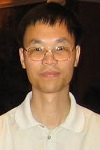
Biography:
Dr. Huiyu Zhou obtained a Bachelor of Engineering degree in Radio Technology from the Huazhong University of Science and Technology of China, and a Master of Science degree in Biomedical Engineering from the University of Dundee of United Kingdom, respectively. He was awarded a Doctor of Philosophy degree in Computer Vision from the Heriot-Watt University, Edinburgh, United Kingdom. Dr. Zhou is presently an assistant professor at Queen's University Belfast, UK. He has published over 120 peer reviewed papers in the field. He serves or has served as a technical program committee for 300 conferences in signal and image processing.
Abstract:
The aim of transport video surveillance is to provide robust security camera solutions for mass transit systems, ports, subways, city buses and train stations. As we have known, numerous security threats exist within the transportation sector, including crime, harassment, liability suits and vandalism. Possible solutions have been directed to insulate transportation system from security threats and to make the system safer for passengers. In this talk, I will introduce our solution to deal with the challenges in transports, in particular, city buses. For the benefit of easy understanding, I will structure the talk into the following four sections: (1) The techniques that we developed to automatically extract and select features from face images for robust age recognition, (2) An effective combination of facial and full body measurements for gender classification, (3) Human tracking and trajectory clustering approaches to handle challenging circumstances such as occlusions and pose variations, and (4) event reasoning in smart transport video surveillance.
Xiaohao Cai
University of Cambridge-DAMTP, UK
Title: Variational image segmentation model coupled with image restoration achievements

Biography:
Xiaohao Cai received his MS degree in Mathematics from Zhejiang University, China, in 2008, and PhD degree in Mathematics from The Chinese University of Hong Kong, Hong Kong in 2012. He is currently a Research Associate in the Department of Applied Mathematics and Theoretical Physics, University of Cambridge. His research interests include image processing, numerical analysis and their applications in processing of digital image, video, biomedical imaging, remote sensing data, etc.
Abstract:
Image segmentation and image restoration are two important topics in image processing with a number of important applications. In this paper, we propose a new multiphase segmentation model by combining image restoration and image segmentation models. Utilizing aspects of image restoration, the proposed segmentation model can effectively and robustly tackle images with a high level of noise or blurriness, missing pixels or vector values. In particular, one of the most important segmentation models, the piecewise constant Mumford–Shah model, can be extended easily in this way to segment gray and vector-valued images corrupted, for example, by noise, blur or information loss after coupling a new data fidelity term which borrowed from the field of image restoration. It can be solved efficiently using the alternating minimization algorithm, and we prove the convergence of this algorithm with 3 variables under mild conditions. Experiments on many synthetic and real-world images demonstrate that our method gives better segmentation results in terms of quality and quantity in comparison to other state-of-the-art segmentation models, especially for blurry images and those with information loss.
Michael Riegler
University of Oslo, Noraway
Title: The Role of Multimedia in the Medical Field – A Tale of Win and Loss
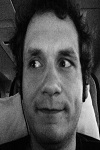
Biography:
Michael Alexander Riegler is a PhD student at Simula Research Laboratory. He received his master degree from the Klagenfurt University with distinction. His master thesis was about large scale content based image retrieval. He wrote it at the Technical University of Delft under the supervision of Martha Larson. He is a part of the EONS project at the Media Performance Group. His research interests are endoscopic video analysis and understanding, image processing, image retrieval, parallel processing, gamification and serious games, crowdsourcing, social computing and user intentions. Furthermore he is involved in several initiatives like the MediaEval Benchmarking initiative for Multimedia Evaluation.
Abstract:
Nowadays multimedia is characterized by a very complex nature due to the combination of different type of media, data sources, formats and resolutions, etc. Moreover, the performance is an important factor because of the sheer scale of the data to process. Therefore, the area of high-performance and scalable multimedia system gets more important. One of most important, complex and rapidly growing part of multimedia processing is the medical field. In most of the hospitals the potential of the large amount of collected multimedia data is ignored. This is very often because of the difficulties that processing such amount of data implies and lacking of efficient and simple-to-use analysis system. On the other hand, medical experts get more used to interact with multimedia content because of their daily live interaction and they want to use it also in their work. Most of the time this is a problem and the most common multimedia problems lay unsolved in this area. In this talk this problem is put into the spotlight and a multimedia system is presented that tackles automatic analysis of the gastrointestinal tract as a part of this problem. The focus lies on the presentation and evaluation of multimedia systems capabilities in the medical field. Therefore a novel system, that utilizes the benefits of heterogeneous architectures and can be used to automatically analyse high definition colonoscopies and large amount of capsular endoscopy devices is presented as a use case. Furhter it will be shown, that the improvement of multimedia systems performance via GPU-based processing can help to reach real-time, live multimedia stream processing and low resource consumption which is important for the medical field and can help to save lives.
Hedva Spitzer
Tel Aviv University, Israel
Title: Multi scale texture measure for companding HDR images and segmentation algorithms
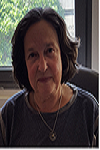
Biography:
Hedva Spitzer has completed his PhD at the age of 32 years from Hebrew University in Jerusalem and postdoctoral studies from National Institute of Health (NIH) in Maryland. She is the head of vision research Lab in electrical school of engineering in Tel Aviv University. She has published more than 40 papers in reputed journals and more than 10 granted patents. Her research interests in recent years have focused on luminance, color, visual adaptation mechanisms, companding natural and medical HDR images, illusory contours, lateral facilitation mechanisms, chromatic aberrations and medical image segmentations and classifications.
Abstract:
We propose a segmentation algorithm and algorithms for companding high dynamic images, which include crucial multi scale texture. This component serves us as an adaptation measure for the algorithm of companding the high dynamic range, and for the segmentation algorithm of non-homogeneous edges and regions. This component was originally inspired by computational model for modeling adaptation mechanisms of assimilation effects in the visual system, were probably functional in enhancing the differences between adjacent texture regions. Many algorithms have been suggested to cope with challenge of the effective companding (compressing and expanding) of high dynamic images. However, the need for a simple, robust and fully automatic algorithm for a large repertoire of images has not yet been met. An algorithm of multi scale adaptive contrast companding (ACC) is suggested, which is inspired by the adaptation mechanisms in the visual system, where a texture contrast in a specific region appears stronger or weaker according to its own value and according to its context contrast. The ACC algorithm successfully compands a large variety of LDR and HDR images, including medical images.The segmentation algorithm applied to B-mode ultrasonographic breast lesions is very challenging. Many studies have tried to answer this aim, with trials to perform maximal resemblance to the contour made by a manual delineation of trained radiologist. In this study, we have developed an algorithm, designed to capture the spiculated boundary of the lesion the above unique multi-scale texture identifier integrated in a level-set framework. The algorithm's performance has been evaluated quantitatively via contour-based and region-based error metrics, on both the algorithm–generated contour and the manual contour delineated by an expert radiologist. The evaluation showed: 1) Mean absolute error of 0.5 pixels between the original and the corrected contour; 2) Overlapping area of 99.2% between the lesion regions, obtained by the algorithm and the corrected contour. These results are significantly better than those previously reported.
Iris Galloso
Universidad Politecnica de Madrid, Spain
Title: Sensorially-enhanced media: one size fits all
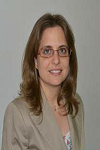
Biography:
Recent studies encourage the development of sensorially-enriched media to enhance the user experience by stimulating senses other than sight and hearing. Sensory effects have been found to favour media enjoyment and to have a positive influence on the sense of Presence and on the perceived quality, relevance and reality of a multimedia experience. Sports is among the genres that could benefit the most from these solutions. However, scientific evidence on the impact of human factors on the user experience with multi-sensorial media is insufficient and sometimes, contradictory. Furthermore, the associated implications, as regards to the potential adoption of these technologies, have been widely ignored. In this talk I will present the results of an experimental study analysing the impact of binaural audio and sensory (light and olfactory) effects on the sports (football) media experience. We consider the impact on the quality and Presence dimensions, both at the overall level (average effect) and as a function of users’ characteristics (heterogeneous effects). Along the quality dimension, we look for possible variations on the quality scores assigned to the overall media experience and to the media components content, image, audio and sensory effects. The potential impact on Presence is analyzed in terms of Spatial Presence and Engagement. The users’ characteristics considered encompass personal affective, cognitive and behavioral attributes. In this talk I will: i) present our experimental study and its outcomes; ii) discuss and contextualize our results; and, iii) highlight open issues, research challenges and specific hypotheses for future research.
Abstract:
Iris Galloso graduated with honors as Engineer and Master in Telecommunications from CUJAE and as PhD in Telecommunications from Universidad Politécnica de Madrid (Outstanding Cum Laude, given unanimously for her doctoral thesis “User experience with immersiva and interactive mediaâ€). She has contributed to +35 R&D collaborative Spanish and European projects. She has authored one book chapter, three research papers (two in Q1 journals) and +21 contributions to international events (6 as invited speaker). She has served as reviewer and member of the Scientific Committee in 7 international conferences and is Substitute Member of the MC of the COST Action 3Dâ€ConTourNet.
S.-H. Gary Chan
The Hong Kong University of Science and Technology, HK
Title: Scaling up Video Streaming with Cloud and Fog: From Research To Deployment

Biography:
Dr. S.-H. Gary Chan is currently Professor at the Department of Computer Science and Engineering, The Hong Kong University of Science and Technology (HKUST), Hong Kong. He is also Chair of the Task Force on Entrepreneurship Education at HKUST. He received MSE and PhD degrees in Electrical Engineering from Stanford University (Stanford, CA), with a Minor in Business Administration. He obtained his B.S.E. degree (highest honor) in Electrical Engineering from Princeton University (Princeton, NJ), with certificates in Applied and Computational Mathematics, Engineering Physics, and Engineering and Management Systems. His research on wireless and streaming networks have led to a number of startups, and received several industrial innovation awards in Hong Kong, Pan Pearl River Delta and Asia-Pacific regions due to their commercial impacts. His research interest includes multimedia networking, wireless networks, mobile computing and IT entrepreneurship.
Abstract:
Due to the popularity of both live and on-demand streaming contents, video has become the mainstream in the Internet traffic. Video traffic is expected to continue to grow due to our demand for better video quality and penetration of mobile devices. Out of all the approaches to scale up video services to millions of users, over-the-top (OTT) delivery emerges as promising to achieve deep user penetration with wide geographical footprints. In order to tame the network congestion and better use network bandwidth in large-scale deployment, we have been conducting research and development of a novel OTT video streaming network using cloud and fog optimization. For live broadcasting, the major concern is to achieve low source-to-end delay and bandwidth cost. For on-demand contents, the major concern is where to replicate and access contents to achieve low interactive delay. In this talk, I will first highlight our research results in cloud and fog streaming. Over the past years, we have been working with industries to deploy the technology to large scale. I will share our experience in our deployment trials, and our technology transfer and commercialization activities in this regard.
Alcides Xavier Benicasa
Federal University of Sergipe, Brazil
Title: An object-based visual selection framework
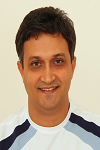
Biography:
Alcides Xavier Benicasa received the Ph.D. degree in Mathematics and Computer Sciences in 2013 by the Institute of Mathematics and Computer Sciences (ICMC), University of São Paulo (USP). He is currently an Adjunct Professor at the Department of Information Systems of the Federal University of Sergipe, Itabaiana, Sergipe, Brazil. His current research interests include artificial neural networks, computer vision, visual attention, bioinformatics, and pattern recognition.
Abstract:
Real scenes are composed of multiple points possessing distinct characteristics. Selectively, only part of the scene undergoes scrutiny at a time, and the mechanism responsible for this task is named selective visual attention. Spatial location with the highest contrast might highlight from scene reaching level of awareness (bottom-up attention). On the other hand, attention may also be voluntarily directed to a particular object in the scene (object-based attention), which requires the recognition of a specific target (top-down modulation). In this paper, a new visual selection model is proposed, which combines both early visual features and object-based visual selection modulations. The possibility of the modulation regarding specific features enables the model to be applied to different domains. The proposed model integrates three main mechanisms. The first handles the segmentation of the scene allowing the identification of objects. In the second one, the average of saliency of each object is computed, which provides the modulation of the visual attention for one or more features. Finally, the third builds the object-saliency map, which highlights the salient objects in the scene. We show that top-down modulation has a stronger effect than bottom-up saliency when a memorized object is selected, and this evidence is clearer in the absence of any bottom-up clue. Experiments with synthetic and real images are conducted, and the obtained results demonstrate the effectiveness of the proposed approach for visual selection.

Biography:
Andrey Zakharoff has completed his PhD in 2004 from Moscow State University of Forest and then work as an image processing engineer with Samsung HDTV R@D lab. Now he is computer vision engineer at Softerra Complex Pro company in Moscow. Being a practical programmer, he can't devote much time to prepare papers for publishing.
Abstract:
As a result of significant JPEG or MPEG loss compression and decompression some specific artifacts may turn up on an image, such as blocks of quadrates or false contours, they especially become ugly visible when the image is stretched on a bigger size of HDTV-panel.In this work we try to detect these artifacts, and reduce their visual perception (reduction) by smoothing, while saving natural edges untouched. The task of detection is completed with general histogram analyzing and it's comparison with some local features on the image. Also a measure of false edge smoothing efficacy is suggested and demonstrated with different combination of smoothing methods.
Zhenzhou Wang
Chinese Academy of Sciences Shenyang Institute of Automation, China
Title: A New Approach for automatic and robust segmentation and quantification of cells and nanoparticles

Biography:
ZhenZhou Wang received his bachelorship and mastership from the department of electronics and information engineering at Tianjin University of China in 2000 and 2003 respectively. He got his Ph.D. degree from the department of electrical and computer engineering at University of Kentucky in 2007. He was selected in the "Hundred Talents Plan, A-Class" of Chinese Academy of Sciences in 2013 and worked as the research fellow/professor at Shenyang Institute of Automation. He also serves as the Panelist for the National Natural Science Foundation of China. He publishes more than 30 papers in reputed journals as the first author.
Abstract:
With the rapid development of microscopy and nanoscale imaging technology, the requirement for automatic and robust segmentation and quantification of cells or nanoparticles increases greatly. Because of the vast variety of the cell or nanoparticle images, most existing methods are only capable of segmenting some specific type of cells or nanoparticles. In this paper, we propose a more versatile and generalized method that is capable of segmenting and quantifying a variety of cells and nanoparticles automatically and robustly. It consists of five parts: (1) automatic gradient image formation;(2) automatic threshold selection; (3) manual calibration of the threshold selection method for each the specific type of cell or nanoparticle images; (4) manual determination of the segmentation cases for each specific type of cell or nanoparticle images; (5) automatic quantification by iterative morphological erosion. After the parameter, N is calibrated and the segmentation case is determined manually for each specific type of cell or nanoparticle images with one or several typical images, only parts (1), (2) and (5) are needed for the rest of processing and they are fully automatic. The proposed approach is tested with different types of cell and nanoparticle images. Experimental results verified its effectiveness and generality. The qunatitative results show that the proposed approach also achieves significantly better accuracy compared to state of the art methods.
Jon-Chao Hong
National Taiwan Normal University, Taiwan
Title: How to gamify learning contents in the flip classroom

Biography:
Jon-Chao Hong has received his doctoral degree in Education from the University of Illinois, Champaign-Urbana, and is currently working as a Chair professor in the department of industrial education at National Taiwan Normal University (NTNU). As the director of Digital Game-based Learning Laboratory (GBL), he has developed 9 web games and 15 educational Apps. These App games were developed based on game-based learning theory to increase the learning motivation of the students. As the President of Taiwan Creativity Development Association, he also organizes several creative contests, such as PowerTech Contest and World Bond Robot Contest to invite elementary, junior and senior high school students to produce robots or miniatures in the morning and using these to compete in the afternoon to ensure students’ hands-on creation without parents or teachers’ assistance. In addition, he has published a number of academic articles in international journals related to digital game-based learning and thinking skills and creativity. Within the last three years, he has successfully published twenty-nine articles on Social Sciences Citation Index (SSCI) journals and received the Outstanding Research Prize from Ministry of Science and Technology in Taiwan.
Abstract:
Gamification typically involves applying game design thinking to non-game applications to make them more fun and engaging. It can potentially be applied to any educational purposes and almost anything to create fun and engaging experiences. In addition, game-based learning is aimed at creating interest. This includes giving students the chance to pose questions, which could help students to activate prior knowledge and link new information to existing knowledge structures with deeper elaboration. In the process of posing and gamifying questions, some factors (e.g. learning anxiety, learning motivation, epistemic curiosity....) could affect the students’ attitudes and learning outcomes. This will be examined based on various App games developed be Digital Game-based Learning Laboratory including “TipOn”, “Whywhy”, “Garden Science” and “Mastering the World” and so on.
Mohamed G. El-Mashed
Menoufia University, Egypt
Title: Flexible Detection Algorithm For Advanced MIMO Systems
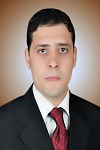
Biography:
Mohamed G. El-mashed received the B.Sc. (Honors), and M.Sc. and Ph.D. from the Faculty of Electronic Engineering, Menoï¬a University, Menouf, Egypt, in 2008, 2012 and 2016, respectively. He joined the teaching staff of theDept. of Electronics and Electrical Communications, Faculty of Electronic Engineering, Menoufia University. His research areas of interest include: Ultra-Wide Band (UWB) Radar applications, Radar signal processing and imaging, MIMO radar system, SAR imaging techniques, digital signal processing, advanced digital communication systems, wireless communication systems, WiMAX, LTE, LTE-A and FPGA implementation in communication systems.
Abstract:
One of the most challenging tasks of advanced MIMO signal processing with respect to the computational requirements is data detection at the receiver side. The transmitted data has to be detected with low probability of error. For high rate MIMO transmission schemes using spatial multiplexing, optimum data detection can easily become prohibitively complex, since one has to deal with a very strong spatial interference of the multiple transmitted data streams. These systems require receiver with high probability of detection and high performance in order to estimate the transmitted data streams. We propose a scalable and flexible detection algorithm with higher performance. It is characterized by dividing the total detection problem into sub-problems. Each sub-problem is solved separately to reduce complexity. The proposed detection algorithm consists of five stages. The stages are preprocessing, Group Interference Suppression, sub-optimum detection algorithm with low dimension to detect first data streams, Interference Cancelation and linear detector to detect last data. Each stage can be updated with advanced stage to enhance the performance without affecting other stages. This algorithm is applicable for advanced communication systems that deploy multiple antennas at transmitter and receiver. This paper investigates the performance of the proposed algorithm and compares its performance with other detection algorithms.
